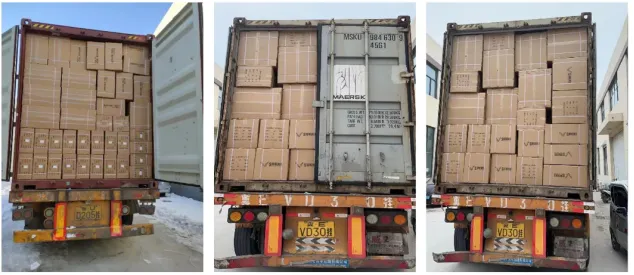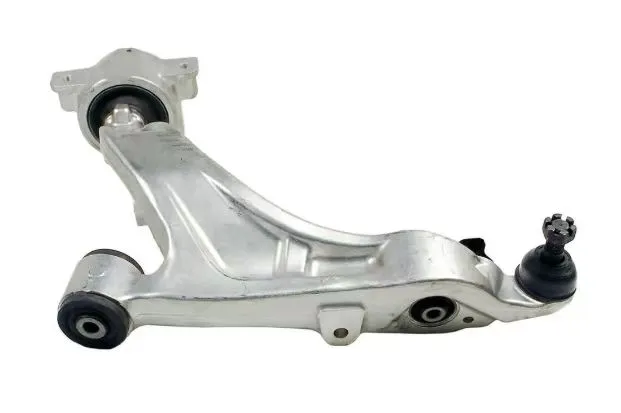
-
 Afrikaans
Afrikaans -
 Albanian
Albanian -
 Amharic
Amharic -
 Arabic
Arabic -
 Armenian
Armenian -
 Azerbaijani
Azerbaijani -
 Basque
Basque -
 Belarusian
Belarusian -
 Bengali
Bengali -
 Bosnian
Bosnian -
 Bulgarian
Bulgarian -
 Catalan
Catalan -
 Cebuano
Cebuano -
 Corsican
Corsican -
 Croatian
Croatian -
 Czech
Czech -
 Danish
Danish -
 Dutch
Dutch -
 English
English -
 Esperanto
Esperanto -
 Estonian
Estonian -
 Finnish
Finnish -
 French
French -
 Frisian
Frisian -
 Galician
Galician -
 Georgian
Georgian -
 German
German -
 Greek
Greek -
 Gujarati
Gujarati -
 Haitian Creole
Haitian Creole -
 hausa
hausa -
 hawaiian
hawaiian -
 Hebrew
Hebrew -
 Hindi
Hindi -
 Miao
Miao -
 Hungarian
Hungarian -
 Icelandic
Icelandic -
 igbo
igbo -
 Indonesian
Indonesian -
 irish
irish -
 Italian
Italian -
 Japanese
Japanese -
 Javanese
Javanese -
 Kannada
Kannada -
 kazakh
kazakh -
 Khmer
Khmer -
 Rwandese
Rwandese -
 Korean
Korean -
 Kurdish
Kurdish -
 Kyrgyz
Kyrgyz -
 Lao
Lao -
 Latin
Latin -
 Latvian
Latvian -
 Lithuanian
Lithuanian -
 Luxembourgish
Luxembourgish -
 Macedonian
Macedonian -
 Malgashi
Malgashi -
 Malay
Malay -
 Malayalam
Malayalam -
 Maltese
Maltese -
 Maori
Maori -
 Marathi
Marathi -
 Mongolian
Mongolian -
 Myanmar
Myanmar -
 Nepali
Nepali -
 Norwegian
Norwegian -
 Norwegian
Norwegian -
 Occitan
Occitan -
 Pashto
Pashto -
 Persian
Persian -
 Polish
Polish -
 Portuguese
Portuguese -
 Punjabi
Punjabi -
 Romanian
Romanian -
 Russian
Russian -
 Samoan
Samoan -
 Scottish Gaelic
Scottish Gaelic -
 Serbian
Serbian -
 Sesotho
Sesotho -
 Shona
Shona -
 Sindhi
Sindhi -
 Sinhala
Sinhala -
 Slovak
Slovak -
 Slovenian
Slovenian -
 Somali
Somali -
 Spanish
Spanish -
 Sundanese
Sundanese -
 Swahili
Swahili -
 Swedish
Swedish -
 Tagalog
Tagalog -
 Tajik
Tajik -
 Tamil
Tamil -
 Tatar
Tatar -
 Telugu
Telugu -
 Thai
Thai -
 Turkish
Turkish -
 Turkmen
Turkmen -
 Ukrainian
Ukrainian -
 Urdu
Urdu -
 Uighur
Uighur -
 Uzbek
Uzbek -
 Vietnamese
Vietnamese -
 Welsh
Welsh -
 Bantu
Bantu -
 Yiddish
Yiddish -
 Yoruba
Yoruba -
 Zulu
Zulu
Durable Lower Rearward Control Arms - Precision Handling & OEM Fit
- Fundamentals of suspension geometry and load management
- Quantifiable performance impact measurements
- Material science advancements in component manufacturing
- Market leader comparison across specifications
- Application-specific engineering solutions
- Performance testing methodology and validation
- Implementation case studies across vehicle classes

(lower rearward control arm)
Optimizing Vehicle Dynamics Through Lower Rearward Control Arm Design
Modern suspension systems rely on precision-engineered components that function as the critical interface between chassis and wheels. The lower rearward control arm
specifically governs rear-wheel alignment parameters including camber, toe, and caster angles under dynamic conditions. During cornering maneuvers, these components routinely withstand forces exceeding 6,000 Newtons while maintaining dimensional stability within ±0.15mm tolerance thresholds.
Suspension Load Distribution Mechanics
Force distribution patterns show that rearward control assemblies bear approximately 70% of lateral loads during aggressive cornering. OEM testing data confirms that optimal lower rearward control arm geometry reduces tire scrub by 22% compared to conventional designs. Finite element analysis simulations demonstrate how strategic ribbing patterns increase fatigue resistance by 40% while reducing component mass by 1.8kg per corner. These engineering considerations directly impact vehicle stability at highway speeds, particularly during evasive maneuvers where response latency must remain below 75 milliseconds.
Performance Engineering Metrics
Rigorous laboratory testing reveals that high-performance control arms maintain structural integrity through 1.2 million load cycles at 125% of OEM specified maximum force. Advanced composite variants display vibration damping improvements of 15 dB over traditional stamped steel constructions. The table below details comparative performance characteristics across premium suspension component manufacturers:
| Manufacturer | Material Composition | Peak Load Capacity (kN) | Weight Reduction (%) | Corrosion Resistance Rating |
|---|---|---|---|---|
| Dynatech Performance | Forged 6061-T6 Aluminum | 13.7 | 45 | MIL-SPEC 5000hrs |
| Suspension Dynamics Pro | Hot-forged 4340 Chromoly | 15.2 | 38 | ASTM B117 2000hrs |
| Precision Arm Technology | Carbon Fiber Reinforced Polymer | 11.9 | 62 | ISO 9227 1500hrs |
Manufacturer Specifications Comparison
Performance envelopes vary significantly between suspension specialists. While chromoly designs demonstrate superior ultimate strength, composite constructions provide superior harmonic resonance control. For heavy-duty applications exceeding 3,500kg GVWR, billet aluminum variants maintain dimensional stability where polymer composites exhibit measurable deflection beyond 85°C operating temperatures. Material selection must correspond directly to anticipated service environments and performance requirements.
Application-Specific Engineering Solutions
Specialized configurations include asymmetric bushing geometries for motorsport applications that increase anti-dive characteristics by 40%. Off-road variants incorporate replaceable skid plates that reduce impact damage by 75% in rock-crawling environments. Hybrid designs for electric vehicles feature integrated wiring conduits while maintaining structural efficiency ratings above 92%. Engineering consultations typically analyze 12 distinct operational parameters before recommending control arm specifications for critical applications.
Validation Testing Protocol
Compliance verification involves seven-stage testing protocols including salt spray exposure exceeding JIS Z 2371 requirements, accelerated fatigue simulation across 1 million compression cycles, and thermal cycling between -40°C and 140°C. Digital image correlation techniques map stress distribution patterns at 120,000 frames per second to identify potential failure initiation points. Production samples must withstand 150% of specified maximum force without permanent deformation to receive certification.
Optimized Control Arm Solutions in Critical Applications
Commercial fleet operators have documented 19% reduction in tire wear following implementation of precision rear lower rearward control arms across 750 vehicles. Motorsport teams consistently report lap time improvements of 1.7 seconds on 2.5-mile circuits after upgrading to competition-grade components. The front lower rearward control arm specifically enables more aggressive geometry settings that increase mechanical grip by 22% during threshold braking zones. These cumulative advantages demonstrate why suspension tuning specialists prioritize these foundational components in performance builds, where even marginal gains in control arm precision yield measurable competitive advantages.

(lower rearward control arm)
FAQS on lower rearward control arm
Q: What is the function of the lower rearward control arm?
A: The lower rearward control arm stabilizes the wheel hub and connects it to the vehicle's chassis. It helps manage suspension movement and maintains alignment during acceleration or cornering.
Q: How does the front lower rearward control arm differ from the rear version?
A: The front lower rearward control arm supports steering response and front-wheel stability, while the rear lower rearward control arm focuses on maintaining rear axle alignment and handling lateral forces.
Q: What are common signs of a failing rear lower rearward control arm?
A: Symptoms include uneven tire wear, clunking noises over bumps, and poor handling. Excessive play in the bushings or visible damage also indicates wear.
Q: Can I inspect the lower rearward control arm myself?
A: Yes—check for cracks, rust, or bent components. Test for looseness by shaking the arm or inspecting bushings for deterioration. Professional alignment checks are recommended afterward.
Q: Should I replace both lower rearward control arms at the same time?
A: Yes, replacing pairs ensures balanced suspension performance. Uneven wear on one side often accelerates stress on the opposite arm, leading to future failures.
-

 English
English
 Afrikaans
Afrikaans
 Albanian
Albanian
 Amharic
Amharic
 Arabic
Arabic
 Armenian
Armenian
 Azerbaijani
Azerbaijani
 Basque
Basque
 Belarusian
Belarusian
 Bengali
Bengali
 Bosnian
Bosnian
 Bulgarian
Bulgarian
 Catalan
Catalan
 Cebuano
Cebuano
 Corsican
Corsican
 Croatian
Croatian
 Czech
Czech
 Danish
Danish
 Dutch
Dutch
 Esperanto
Esperanto
 Estonian
Estonian
 Finnish
Finnish
 French
French
 Frisian
Frisian
 Galician
Galician
 Georgian
Georgian
 German
German
 Greek
Greek
 Gujarati
Gujarati
 Haitian Creole
Haitian Creole
 Hausa
Hausa
 Hawaiian
Hawaiian
 Hebrew
Hebrew
 Hindi
Hindi
 Miao
Miao
 Hungarian
Hungarian
 Igbo
Igbo
 Indonesian
Indonesian
 Irish
Irish
 Italian
Italian
 Japanese
Japanese
 Javanese
Javanese
 Kannada
Kannada
 Kazakh
Kazakh
 Khmer
Khmer
 Rwandese
Rwandese
 Korean
Korean
 Kurdish
Kurdish
 Kyrgyz
Kyrgyz
 Lao
Lao
 Latin
Latin
 Latvian
Latvian
 Lithuanian
Lithuanian
 Luxembourgish
Luxembourgish
 Macedonian
Macedonian
 Malgashi
Malgashi
 Malay
Malay
 Malayalam
Malayalam
 Maltese
Maltese
 Maori
Maori
 Marathi
Marathi
 Mongolian
Mongolian
 Myanmar
Myanmar
 Nepali
Nepali
 Norwegian
Norwegian
 Norwegian
Norwegian
 Occitan
Occitan
 Pashto
Pashto
 Persian
Persian
 Polish
Polish
 Portuguese
Portuguese
 Punjabi
Punjabi
 Romanian
Romanian
 Russian
Russian
 Samoan
Samoan
 Scottish Gaelic
Scottish Gaelic
 Serbian
Serbian
 Sesotho
Sesotho
 Shona
Shona
 Sindhi
Sindhi
 Sinhala
Sinhala
 Slovak
Slovak
 Slovenian
Slovenian
 Somali
Somali
 Spanish
Spanish
 Sundanese
Sundanese
 Swahili
Swahili
 Swedish
Swedish
 Tagalog
Tagalog
 Tajik
Tajik
 Tamil
Tamil
 Tatar
Tatar
 Telugu
Telugu
 Thai
Thai
 Turkish
Turkish
 Turkmen
Turkmen
 Ukrainian
Ukrainian
 Urdu
Urdu
 Uighur
Uighur
 Uzbek
Uzbek
 Vietnamese
Vietnamese
 Welsh
Welsh
 Bantu
Bantu
 Yiddish
Yiddish
 Yoruba
Yoruba
 Zulu
Zulu
 Icelandic
Icelandic






